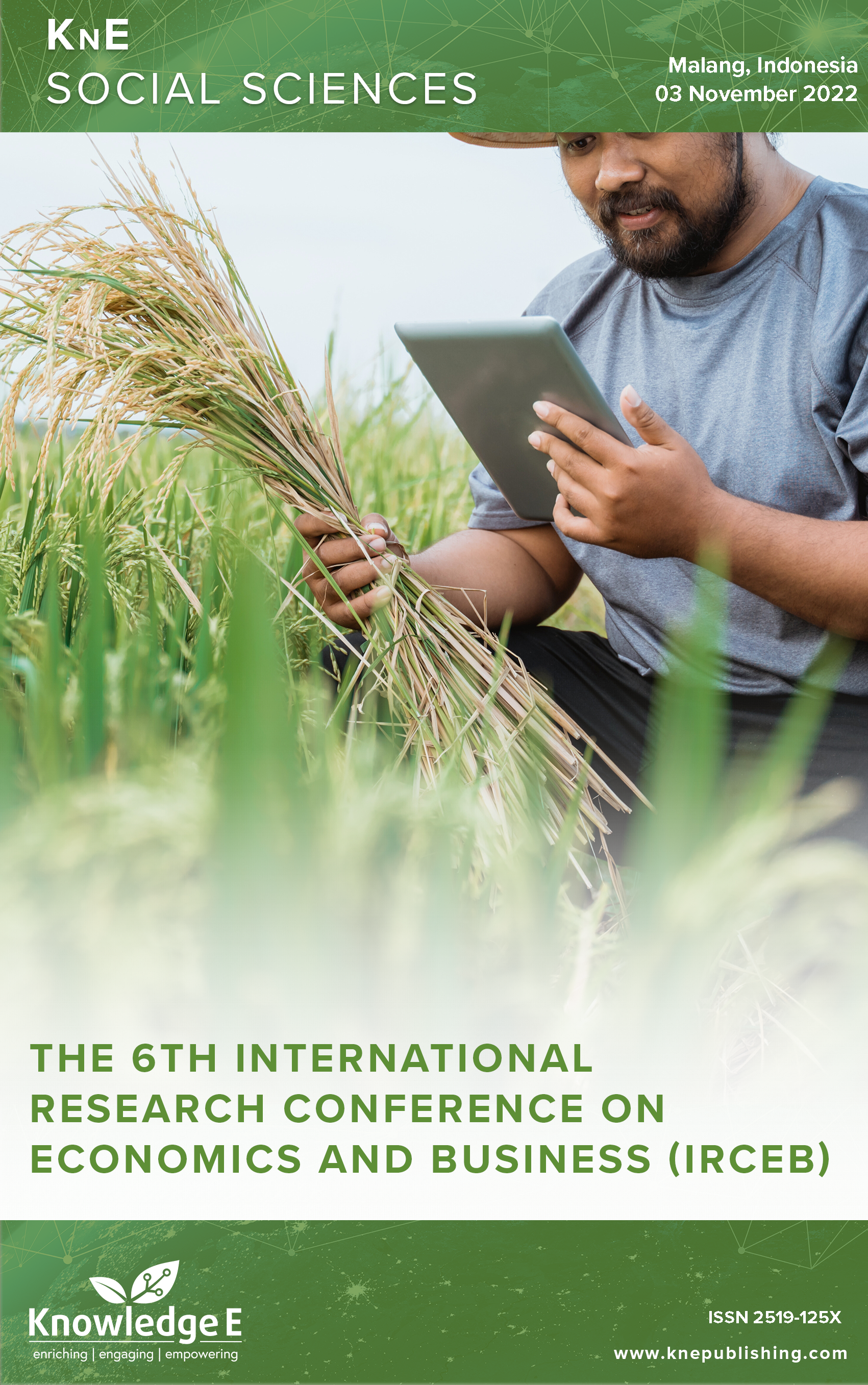Perception and Interpretation Analysis Among Consumers Toward Instant Herbal Products
DOI:
https://doi.org/10.18502/kss.v9i4.15113Abstract
Traditional medicine is an alternative that the community can use to maintain body immunity. Plants that can be consumed as immune boosters include ginger and turmeric. Several phytochemical compounds known to have physiological functions are carotenoids, phytosterols, saponins, glycosinolates, polyphenols, protease inhibitors, monoterpenes, phytoestrogens, sulfides, and phytic acid. The abundant availability of biopharmaceutical plants has been utilized by small and medium enterprises (SMEs) in Semarang to be processed into various postharvest processed products in the form of instant powder drinks, as was provided by AIG Bunda Nisa SMEs in Delik Village, Tuntang District. This study aimed to determine consumer perceptions and interpretations of instant herbal products. The research locus is located in the city and regency of Semarang and its surrounding areas. Primary data were obtained through interviews and questionnaires, while secondary data were obtained through literatures related to the research. The product used as the object of study is the product of AIG Bunda Nisa’s instant herbal medicine. The attributes that will be assessed by consumers include price, taste, benefits, texture, packaging, legality, and ease of obtaining. The results showed that the types of instant herbal medicine that were often consumed by respondents were ginger 30%, Curcuma (Curcuma Xanthorrhiza Roxb) 26%, and turmeric (Curcuma Domestica Vahl) 21%. The motivation of 68.1% of respondents to consume instant herbal medicine is for health, while taste and quality being the primary considerations. In this matter, the benefit attribute becomes essential. Consumers expect the spice taste to be strengthened by reducing the sugar content and the price to be more affordable.
Keywords: consumer, interpretation, instan herbal medicine, perception
References
Agustini NK. Segmentasi Pasar, Penentuan Target dan Penentuan Posisi. Jurnal Ekonomi-Manajemen-Akuntansi. 2003;1(2):91–106.
BPS. Statistik Pertanian Hortikultura Provinsi Jawa Tengah 2017-2019. Semarang: Badan Pusat Statistik Provinsi Jawa Tengah; 2020.
BPS. Statistik Pertanian Hortikultura Kabupaten Semarang 2017-2018. Ungaran: Badan Pusat Statistik Kabupaten Semarang. 2019.
Defitasari SW, Indah PN, Syah MA. Analisis Preferensi Konsumen Terhadap Minuman Jamu Tradisional di Kecamatan Gondang Kabupaten Nganjuk Analysis of Consumer Preferences for Traditional Herbal Drinks in Gondang Subdistrict Nganjuk Regency. Jurnal Ilmiah Mahasiswa Agroinfo Galuh. 2022;53(42):5–14.
Dewati R, Saputro WA. Persepsi Konsumen Terhadap Pembelian Produk Herbal Di Kabupaten Sukoharjo. AGRISAINTIFIKA: Jurnal Ilmu-Ilmu Pertanian. 2020;4(2):144– 152. DOI: https://doi.org/10.32585/ags.v4i2.889
Hayu RS. Smart Digital Content Marketing, Strategi Membidik Konsumen Millennial Indonesia [ Jurnal Manajemen dan Kewirausahaan]. JMK. 2019;4(1):61–69. DOI: https://doi.org/10.32503/jmk.v4i1.362
Hermawan Y. Perhitungan Harga Pokok Produk Minuman Serbuk Instan dengan Metode Full Costing di UPT Materia Medica Batu. Cakrawala. 2020;14(2):183–197.
Novianti, D. Potensi dan Pengembangan Jenis Tanaman Obat di Desa Meranjat Kecamatan Indralaya Selatan. Sainmatika: Jurnal Ilmiah Matematika dan Ilmu Pengetahuan Alam. 2017;14(1):45-52.
Ridwan. Selama Pandemi Covid-19, Konsumsi Jamu di Indonesia Meningkat. [diakses 19 Oktober 2020]. Available athttps://juaranews.com/berita/40650/05/08/2020/selama-pandemicovid-19- konsumsi-jamu-di-indonesia-meningkat
Setyopratomo P, Siswanto W, Ilham HS. Studi eksperimental pemurnian garam NaCl dengan cara rekristalisasi. Unitas. 2003;11(2):17–28.
Sharma A, Khamar D, Cullen S, Hayden A, Hughes H. Innovative drying technologies for biopharmaceuticals. Int J Pharm. 2021 Nov;609:121115. DOI: https://doi.org/10.1016/j.ijpharm.2021.121115
Simamora B. Panduan Riset Perilaku Konsumen. Jakarta (ID): PT. Gramedia Pustaka Utama. 2004.
Siregar RS, Siregar AF. Analisis Hubungan Sikap dan Tingkat Pengetahuan terhadap Perilaku Masyarakat Kota Medan Mengonsumsi Jamu Tradisional di Masa Pandemi Covid–19. In Prosiding Seminar Nasional Pertanian (Vol. 3, No. 1). 2021.
Sumarwan U. Perilaku Konsumen: Teori dan Penerapannya dalam Pemasaran. Edisi Kedua. Bogor (ID): PT Ghalia Indonesia. 2011.
Walpole. Pengantar Statistika Edisi 3. Jakarta (ID): Gramedia; 1992.
Winahyu AI. Peneliti: Semakin Banyak Orang Minum Jamu karena Covid-19 [Accessed on 19 Oktober 2020]. Available at https://mediaindonesia.com/read/detail/329999-peneliti-semakinbanyak-orangminum- jamu-karena-covid-19
Yulianto. Analisis Preferensi Konsumen Jamu Serbuk Kemasan di Kota Bogor, Jawa Barat. Skripsi. FP. IPB. 2009.

